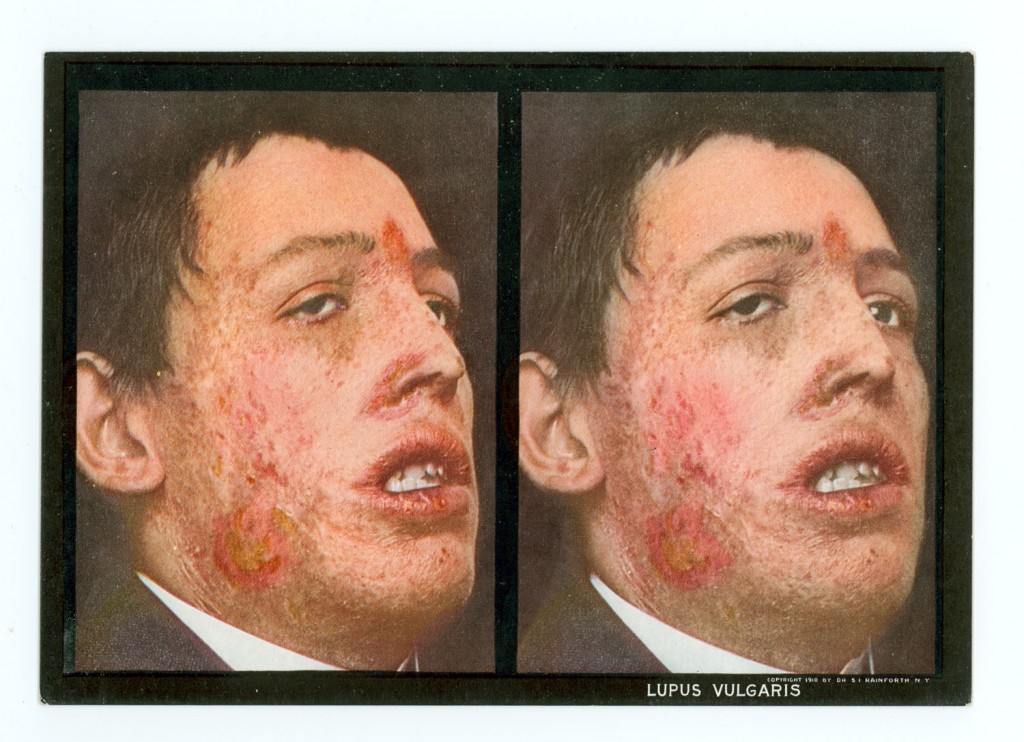Missed our 2011 exhibition “Our Friend, the Sun: Images of Light Therapeutics, 1901-1944”? Here’s a sneak preview of the digital exhibition currently under construction. You can find the full exhibition catalogue by curator Dr. Tania Anne Woloshyn here. And stay tuned for more!

John Harvey Kellogg. Light therapeutics: a practical manual of phototherapy for the student and the practitioner. 2nd ed. Battle Creek, Mich. : Modern Medicine Pub. Co., 1927.
Remember our long-suffering patient from last week? Contrast that with this week’s gleeful recipient of light therapy. By the 1920s, physicians began incorporating advertising imagery into their textbooks. In this photomontage, we are presented with a fresh-faced, smiling model, coiffed in the latest 1920s crop. The impression is that this phototherapeutic treatment is neither uncomfortable nor distressing, but in fact an enjoyable process. The ambiguity of her surroundings, reminiscent of a photographer’s studio, is heightened by the impossibilities of the scene: the rays of the lamp (which itself appears hand drawn) shine on her chest and yet continue undisturbed beyond her.
Further reading
Simon Carter. Rise and Shine: Sunlight, Technology, and Health. New York: Berg, 2007.
Tania Anne Woloshyn, “‘Kissed by the Sun’: Tanning the Skin of the Sick with Light Therapeutics, c.1890–1930,” in Kevin Siena and Jonathan Reinarz, eds. A Medical History of Skin: Scratching the Surface (London: Pickering & Chatto, 2013), chap. 12.



